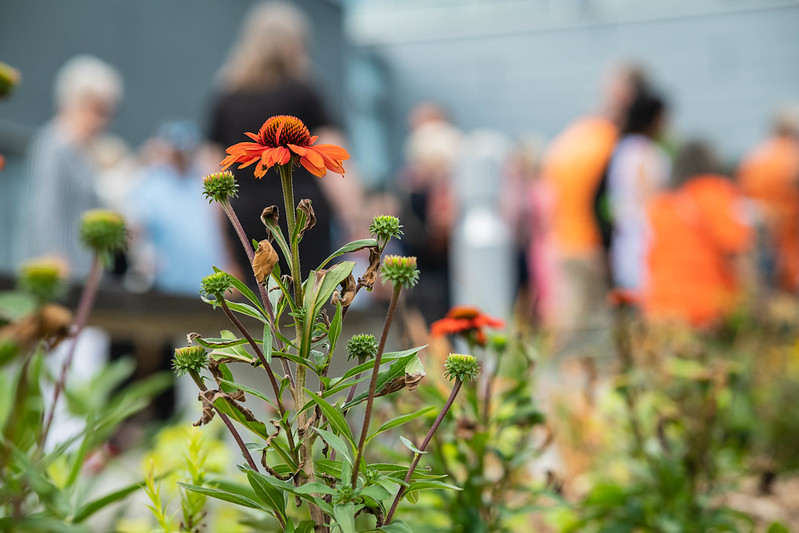
As September 30 marks the National Day of Truth and Reconciliation, we would like to invite you to don your orange shirt and take some time today (and every day) to reflect on the legacy of residential schools and their impacts on Indigenous communities across Canada.
To immerse ourselves into the spirit of Truth and Reconciliation and honour the contributions that Indigenous peoples have made – and continue to make – in our community, we would like to share with you some ways to get involved:
Wear Orange:
As September 30 marks the Orange Shirt Day, we encourage you to wear orange to raise awareness of the legacy of residential schools and to honour the survivors and the families of those who never returned home. Visit the Orange Shirt Day Society website to learn more.
Attend an event:
A series of events will be held both in-person and online. Take some time to attend one of the events held by Indigenous people and educate yourself about their story and the legacy of Residential Schools.
-
- Come hear Phyllis Webstad speak for the National Day of Truth and Reconciliation
Date and time: September 30, 2021 – 11:00 AM
Where: Fraser River Heritage Park, 7494 Mary Street, Mission, BC (covered area)
- Come hear Phyllis Webstad speak for the National Day of Truth and Reconciliation
-
- Indigenous Research and Indigenous Methodologies: Convergences and Divergences
Date and time: October 1, 2021 – 2:30 PM to 3:45 PM (online)
Where: Online
- Indigenous Research and Indigenous Methodologies: Convergences and Divergences
-
- Truth and Reconciliation Week
Date and time: From September 27 to October 1, 2021 – Various times
Where: Online
- Truth and Reconciliation Week
-
- Peace Talk by PARC: Renaming and Destatuing: Challenging History in the Age of Reconciliation Building
Date and time: September 30, 2021 – 11:00 AM to 12:30 PM (online)
Where: Online
- Peace Talk by PARC: Renaming and Destatuing: Challenging History in the Age of Reconciliation Building
-
- Spirit of the Children Society Pipe Ceremony
Date and time: September 30, 2021 – 4:00 PM to 6:00 PM
Where: Pier Park Festival Lawn – 6th Street, New Westminster
- Spirit of the Children Society Pipe Ceremony
-
- Lexéywa Art Activism – A Recalling of a Residential School Experience – Art Exhibition
Date and time: September 28 and 29, 2021 – 9:00 AM to 8:00 PM
Where: Evered Hall at the UFV Abbotsford Campus Building S, room 1114.
- Lexéywa Art Activism – A Recalling of a Residential School Experience – Art Exhibition
Listen to Indigenous stories:
-
- Prime-time broadcast for the National Day for Truth and Reconciliation:
Date and time: September 30, 2021 – 8:00 PM (ET) on APTN, CBC, CBC Gem, ICI TÉLÉ and ICI TOU.TV.
- Prime-time broadcast for the National Day for Truth and Reconciliation:
-
- Beautiful Land of the River – short video: Learn more about the Stó:lō territory and the native People of River.
Explore Online Resources:
-
- Interactive Materials – Government of Canada: Visit the Government of Canada website and explore interactive and creative resources to help you get involved and learn more about the rich and diverse cultures, voices, experiences and histories of First Nations, Inuit and Métis Peoples.
The College of Arts at the University of the Fraser Valley is situated on the traditional territory of the Stó:lō peoples. The Stó:lō have an intrinsic relationship with what they refer to as S’ólh Téméxw (Our Sacred Land); therefore, we express our gratitude and respect for the honour of living and working in this territory.
The College of Arts also reiterates its commitment to action to all Indigenous communities through the continued support of Indigenous learners and the integration of Indigenous ways of knowing in the curriculum.


